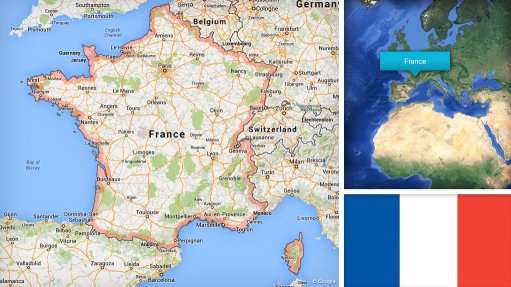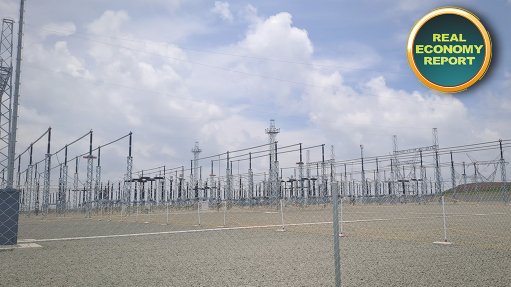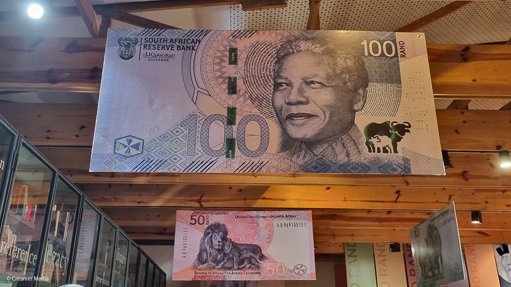Our wonderful world
Civil engineers very often ask me about electrical engineering. However, since civil engineers are pretty good listeners, absorb the following and you will know more about electrical engineering.
In the 1800s, coal mine owners pumped water out of their mines using horse-operated water pumps. Steam engines were invented and steam engine power was expressed in horsepower, being the number of pump horses that could be replaced by a steam engine.
In 1844, a direct current (dc) generator was hooked up to the steam engine and produced a voltage at its terminals. The terminals could be connected to an electrical load (such as an electroplating bath) through which current would flow. Voltage was measured in volts and current in amps. One could relate the product of volts and amps to horsepower by using a constant. However, these days we just say V × A = watts (for a dc generator; it is similar for an alternating current, or ac, generator).
Given this, my girls and lads, we can understand the national grid and renewable energy.
The national grid is like a huge dam filled with water. At many points, the water drains out in the form of current, which supplies consumers. To prevent the dam level from changing (thus affecting the current flow that supplies consumers), there are a number of power stations that ‘pump water’ into the dam in the form of current. The power stations are self-regulating; so, they never pump so much such that the dam level rises at all and they never pump so little such that the dam level falls.
In South Africa, we have about 18 coal-fired power stations with a total power output of 40 000 MW. Partially or fully loaded, the demand of the South Africa grid is about 36 000 MW.
We also have about 3 200 MW of solar, wind and concentrated solar power (CSP) stations. Unlike the coal-fired power stations, the output of these stations cannot be guaranteed over any 24-hour period. Very obviously, the solar stations do not work much after the sun has gone down and the wind stations work only when the wind blows.
There are many predictions that solar, wind and CSP stations can lead to the South African grid being unstable. This would typically occur if our notional ‘huge dam’ could not supply all the current to the consumers and the dam level fell to the point that the power stations would disconnect themselves automatically. Then, to restore the situation, one would have to cut the current supply to all the consumers and wait for the dam to fill up to the correct level. You would also have to connect current back to consumer by consumer and power station by power station, balancing one against the other, until the dam was full to the correct level and the current flowing in and the current flowing out were equal. Doom and gloom merchants say that this could take weeks if it were to happen. In point of fact, in the worst case scenario, it would take three days to recover from a total grid collapse.
The question is: Could the variability of renewable-power generation systems lead to a total grid collapse? This is easily answered. For a grid collapse to occur, the current going out of our notional dam must be more than the current being fed in (an aside: if all the supply to power stations were disconnected, the dam would empty beyond recovery within about 10 seconds).
Assume that, for some reason, all the renewable-power generation systems disconnected. This would leave a deficit of about 10% of the current requirements of consumers. In any coal-fired power station, a 10% change in load is easily accommodated. Thus, really, no amount of renewable energy can cause a grid to go unstable, unless the grid operators are stupid. They are not. If they note that a large portion of the grid supply is coming from unreliable renewable energy, the grid operators will immediately make plans to have gas turbines installed to take up the slack when the renewables are not around. Of course, gas turbines cost an absolute fortune – but heck, that is how it goes. Pumps, dams, water . . . geddit?
Article Enquiry
Email Article
Save Article
Feedback
To advertise email advertising@creamermedia.co.za or click here
Comments
Press Office
Announcements
What's On
Subscribe to improve your user experience...
Option 1 (equivalent of R125 a month):
Receive a weekly copy of Creamer Media's Engineering News & Mining Weekly magazine
(print copy for those in South Africa and e-magazine for those outside of South Africa)
Receive daily email newsletters
Access to full search results
Access archive of magazine back copies
Access to Projects in Progress
Access to ONE Research Report of your choice in PDF format
Option 2 (equivalent of R375 a month):
All benefits from Option 1
PLUS
Access to Creamer Media's Research Channel Africa for ALL Research Reports, in PDF format, on various industrial and mining sectors
including Electricity; Water; Energy Transition; Hydrogen; Roads, Rail and Ports; Coal; Gold; Platinum; Battery Metals; etc.
Already a subscriber?
Forgotten your password?
Receive weekly copy of Creamer Media's Engineering News & Mining Weekly magazine (print copy for those in South Africa and e-magazine for those outside of South Africa)
➕
Recieve daily email newsletters
➕
Access to full search results
➕
Access archive of magazine back copies
➕
Access to Projects in Progress
➕
Access to ONE Research Report of your choice in PDF format
RESEARCH CHANNEL AFRICA
R4500 (equivalent of R375 a month)
SUBSCRIBEAll benefits from Option 1
➕
Access to Creamer Media's Research Channel Africa for ALL Research Reports on various industrial and mining sectors, in PDF format, including on:
Electricity
➕
Water
➕
Energy Transition
➕
Hydrogen
➕
Roads, Rail and Ports
➕
Coal
➕
Gold
➕
Platinum
➕
Battery Metals
➕
etc.
Receive all benefits from Option 1 or Option 2 delivered to numerous people at your company
➕
Multiple User names and Passwords for simultaneous log-ins
➕
Intranet integration access to all in your organisation

















